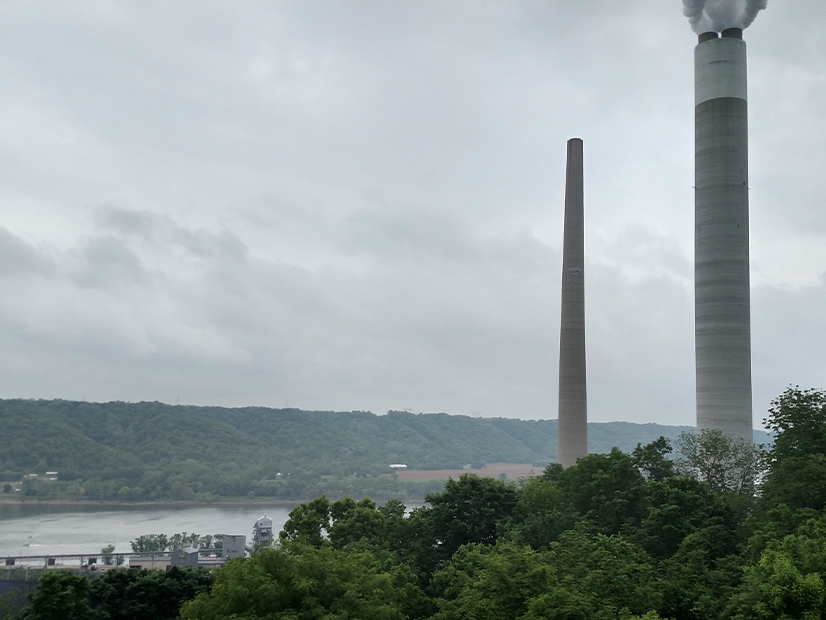
FERC on Friday approved a $300,000 settlement between ReliabilityFirst and Ohio Valley Electric Corp. (OVEC) for violations of NERC reliability standards concerning vegetation management.
NERC submitted the settlement Oct. 28 (NP22-1). In its Friday filing, FERC indicated it would not review the settlement.
OVEC’s penalty stems from two violations of FAC-003-4 (Transmission vegetation management), specifically the following requirements:
-
-
- R2: Transmission owners and generator owners (GOs) must manage vegetation to prevent encroachments into the minimum vegetation clearance distance of applicable lines.
- R6: At least once a year, TOs and GOs must perform vegetation inspections of 100% of applicable transmission lines. No more than 18 calendar years may pass between inspections on the same transmission right of way (ROW).
-
The utility reported its violation of R2 in September 2018, after experiencing an outage on the 345-kV circuit between the Clifty Creek power plant in Indiana, operated by Indiana-Kentucky Electric Corp. (IKEC) — OVEC’s subsidiary — and the Pierce substation in Ohio.
At 2:12 p.m. on Sept. 4, 2018, a cedar tree contacted the line from inside the ROW, causing the circuit to trip and lock out of service. When the circuit failed to reclose automatically as designed, OVEC surveyed the line and found that a phase conductor had sagged into the tree, which was about 30 feet high. After the utility cut the tree, it re-energized the transmission line, and service was restored at 6:42 p.m.
OVEC had surveyed the span where the contact occurred in 2017 and concluded that vegetation clearing was needed, later including the span in a work scope created in February 2018. But the work had not been done at the time of the contact.
RF blamed the violation on ineffective prior inspections — both in 2017 and a partial survey in 2018 — that failed to identify the slow-growing cedar tree as a significant risk, and on ineffective vegetation management and clearing activities. The regional entity assessed the risk posed by OVEC’s violation as “serious” because the outage could have led to overloading of other transmission lines and cascading system failures; however, RF also acknowledged that because of the “operating characteristics and design of OVEC’s 345-kV transmission system,” no actual load loss occurred.
Helicopter Crashes, Hurricanes Hinder Inspections
The infringement of R6 came to light during a compliance audit begun by RF nearly a year after the R2 violation. RF found that OVEC had not completed vegetation inspections on 100% of its transmission lines as the requirement mandated.
A number of factors contributed to OVEC’s failure to complete the inspections. First, a helicopter crash in June 2019 prevented the utility from conducting the inspections — then around 90% completed — according to its schedule. OVEC rescheduled the remaining inspections to begin in October with another contractor (RF noted that it was during this delay that the tree encroached on the Clifty Creek-Pierce line, which had not yet been inspected.), but the new contractor was unable to complete the task in 2018 “because a hurricane damaged its helicopter hangar.”
RF acknowledged the difficulty of the situation for OVEC, which had to vet and hire a new helicopter operator in a relatively short time frame to complete the inspections by the end of 2018, and that new contractor was still unable to finish the task through no fault of the utility. But in its report, the RE stressed that the vegetation inspections are of paramount importance — again noting the Clifty Creek-Pierce outage — and said that the inability to complete them demonstrated “ineffective planning combined with ineffective contractor management.”
Mitigation measures for both violations were certified completed by the end of May 2020. OVEC’s efforts to address the infringements include detailed vegetation inspections via helicopter on all OVEC-IKEC circuits; a root cause analysis of the violation; formalizing documentation of vegetation management schedules and results to include versions, dates and signatures of personnel involved; and revising its transmission vegetation management plan to “address the latest version of the FAC-003 standard and to address the quality of inspections and documentation of said processes.”
RF noted the completion of the mitigation measures, and that there were no prior instances of noncompliance by OVEC that would affect the penalty. The RE concluded that the $300,000 penalty would bear a “reasonable relation to the seriousness and duration of the violations.”
The ERO also filed a separate, nonpublic NOP regarding an unnamed registered entity (NP22-2), in accordance with FERC and NERC’s policy on violations of Critical Infrastructure Protection standards.



